Ascension Island Expedition — Ascension Island, Day Three: The Dive
HIGHLAND SPRINGS, Va. (Friday, January 25, 2008) – I was nervous when I woke up Sunday morning in my room at Ascension Auxiliary Air Field. This was going to be my big day. The dive gear I had lugged with me 10,000 miles from Richmond eastward to London; northward from London to Thurso, Scotland; southward from Thurso to Oxford, England; and then from Oxford even farther south to Ascension Island was either going to prove useful, or it would prove to be a total waste of shipping weight and effort.
This was the day I was to go scuba diving to see some of the sea life off Ascension.
I had many reasons to be nervous. I had been scuba diving only six months. All my dives at that point had been in fresh water; This was my first ocean dive. I was diving with people I had never met before: my contact, Jimmy Young, and his friend Paul Fuller. Some of the equipment I was using – tank, regulator, and buoyancy compensation device (BCD), in other words, the stuff that was to keep me alive – I had never seen before. This was to be my first dive from a boat as well as my deepest dive to that point. If I screwed up and got swept away in a current, I had thousands of miles of South Atlantic Ocean to drift in before reaching any alternative landfall.
Oh, and I hadn’t had much breakfast and NO coffee – none of the places that sold coffee to walk-in customers like me were open at the time I had to meet Jimmy and Paul at the pier in Georgetown.
I donned my swim gear and dive skin, loaded my dive bag with mask, fins, snorkel, and camera into our Obsidian Hotel rental car, and Tom Smith drove Steve Stephenson and I down to the pier. It wasn’t a long drive from the air field – nothing is a long drive from the air field – but I had plenty of time to repeatedly and silently recite a version of the Alan Shepard prayer: “God, please don’t let me fuck this up.”
Since I had not met either Jimmy or Paul before, I had no idea whom or what to look for when Steve, Tom, and I arrived at the Georgetown pier. I walked up to a group of divers unloading equipment from a small sport utility vehicle. They turned out to be a different group of divers. Paul and Jimmy were easy to spot after that – it’s not that big of a pier.
They were loading dive equipment into a Zodiac – à la Jacques-Yves Cousteau – that was sitting on a boat trailer. I’ve seen the type of rig before: john boats, bass boats, other small boats loaded on trailers pulled by your everyday car or truck. So far, so good. Something was missing, though. The boat ramp.
The Georgetown pier was at least 10 feet above the sea surface. I scanned the beaches around the pier but saw no place to back the trailer into the water. I doubted Jimmy or Paul planned to shove the Zodiac over the rail. So how were they going to get the boat in the water?
When our gear was stowed to Jimmy’s satisfaction, he went up to a large shed – garage – at the end of the street adjacent to the pier. An engine started, and the next thing I saw was a small, green, self-propelled crane heading to the pier. Jimmy was at the wheel.
He drove to the end of the pier next to the trailer and positioned the lift arm over the center of the boat. Paul then attached lift straps that ran under the boat to the hook at the end of the crane’s arm.
Jimmy lifted the boat a bit, Paul tested then straps, then Jimmy picked it completely off the trailer and lifted it over to the edge of the pier. Paul and I watched as he lowered the boat into the sea, then Paul went down the notorious steps that led from the top to the base of the pier and jumped in the water. Paul swam to the boat, climbed in, then unhooked the straps and threw them in the boat. Jimmy drove the crane back to its parking space. Paul started the Zodiac’s outboard motor, steered the boat to the base of the steps, and tied off the pier while Jimmy and I made our way down the steps.
I crawled in, found a seat on the side of the boat as Jimmy and Paul directed, and waited for my heart and respiration rate to slow down. Before my vital signs had a chance to return to normal, Jimmy and Paul cast off the lines; Paul put the motor into gear and steered the boat out of Georgetown Harbor toward the vast Atlantic that lay ahead. I waved back toward Steve and Tom, then turned my attention to the sea.
MECHANICSVILLE, Va. (Saturday, January 26, 2008) – In some ways, the trip to the dive site was like a ride in a john boat on a very, very large lake. But what a lake it was! We hugged the shore of Ascension on our right – no shore was visible to our left. But there were other craft, sail boats, motor boats, and one large, mysterious ship (the MV TSgt. John A. Chapman, on contract to the U.S. Military Sealift Command) moored off Georgetown.
By the time we passed the north end of Long Beach, we were alone. We didn’t travel too far before Paul eased the throttle back and Jimmy dropped anchor. I think it was somewhere between Pyramid Point and English Bay. A few yards from the boat, a guano-covered rock jutted out of the sea. Brown boobies (Sula leucogaster) and black and brown noddies (Anous minutus and A. stolidus, respectively) alternately zipped around us and rested on the rock and shore nearby.
Jimmy, Paul, and I got our gear together. I nervously assembled the BCD and regulator that I had borrowed from them, put my camera together, and realized that I could not remember how to use the strobe on my camera, a Sea & Sea Motor SeaMaster Pro-EX. I couldn’t remember a lot of things at that point – so I kept reciting Alan Shepard’s prayer to myself.
Paul told me to attach the camera rig to a line, which he then lowered overboard. He then told me to don my gear, sit on the side of the Zodiac, and roll backward (as I had seen Jacque Cousteau’s crew do so many times on TV). When I was ready, I stuck my regulator in my mouth, put my right hand over the reg and my mask to keep them in place when I hit the water, and tumbled over the side.
My nerves settled as I sank down to the end of the line where my camera was suspended. I attached it to a D-ring on my BCD, then swam over to the anchor line and followed it down to the bottom as Paul had instructed. The waters surrounding Ascension, because of the low nutrient levels, are very clear. So clear, in fact, that one can easily get disoriented in the open water without some other frame of reference – hence the need to follow the anchor line.
I could see the bottom from the boat, but to actually reach it I had to go down to a little more than 65 feet. Once we were all together, I followed Jimmy and Paul down the slope to a depth of 75 feet.
The wall leading up to the rock and the nearby shore was quite steep, the dark-gray color of the lava that dominated much of what they called “clinker” on Ascension. From the base of the wall, the bottom sloped more gently out to deeper water. Unlike a coral reef, there were few obvious signs of life attached to either the wall or the bottom. The bottom itself was light gray, littered with gravel-to-cobble sized volcanic stones.
The life was there, of course. Black durgon (Melichthys niger) and ocean triggerfish (Canthidermis sufflamen) were the most abundant of the larger fish, which included sand tilefish (Malacanthus plumieri). Blue surgeonfish (Acanthurus coeruleus) fed among the rocks on the bottom. Rock hinds (Epinephelus adscensionis), fangtooth morays (Enchelycore anatina), and sea urchins (Diadema antillarum ascensionis) tried to hide their bodies among the rocks. Smaller species, such as the resplendent angelfish (Centropyge resplendens) and Lubbock’s yellowtail damselfish (Stegastes lubbocki) were more successful at concealing themselves.
I shot up a roll of film, but since my mind blanked on the use of the strobe, I kept it off. After the film was developed, I learned one of the cardinal rules of underwater photography – if you want to capture the colors at depth, you really need to use a flash! I noticed little more than a yellow-green tint to everything I saw, but the film didn’t capture the range of color I saw. There was nothing wrong with the camera, though. Water filters the light, absorbing some colors (reds and yellows) before others (blues and greens). Our brain adjusts for the effect, so that things look more or less normal to us, but film has no similar ability to compensate. The underwater photos you see here are much bluer on the original slides – but I have added back some of the missing color digitally after scanning the slides.
Being more nervous – and probably in much worse physical shape – than Jimmy or Paul, I used my air up faster than they did. I made my way back to the anchor, swam around it until my air pressure dropped as low as I cared for it to drop, and followed the anchor line back to the surface. I swam around the surface until Paul showed up, then we crawled in the boat and got our gear in. Jimmy was last to surface. With us all together and the anchor raised, Paul started the motor and steered the boat back toward Georgetown.
Going down the steps on the Georgetown pier earlier that morning was easy: A slip would have landed us in our destination – the boat. Getting out of the boat onto the steps upon our return, however, was another matter. The British journalist and author Simon Winchester has written about the treacherous steps on the pier. In his book, The Sun Never Sets, he writes of “nearly drowning myself as I leapt for the rope at the bottom of the Tartar Steps, missed, and slipped on the slime. . . .”
As Paul pulled the Zodiac up to the pier, Jimmy and I each grabbed ropes. But the treacherous swell kicked in, lifting the boat up and pulling it away from the pier. Like a fool, I held on to my rope. My feet pulled away – leaving me dangling like a pig on a slanted spit – and my hands slipped and I fell in. With my glasses on!
I crawled to the surface, realizing that being between a boat and a pier in a nasty swell was a less-than-ideal situation. Paul pulled the boat away. I tried to climb up on the base of the steps, but they wouldn’t sit still. I eventually grabbed one of the ropes and tried to pull myself up. Twenty years and 50 pounds ago, the gambit may have worked. Not this time, though.
A number of people called out suggestions. One, from Jimmy I think, was to hold on to the rope and let the swell lift me up on the steps. When a big enough swell came, I swung my legs forward as if in a sitting position. The water deposited me on the concrete on my stern. It wasn’t a dignified landing, but it worked! My glasses even managed to stay where they belonged — on my head!
Jimmy and Paul pulled up. Steve and Tom – who had explored the area around Georgetown while I was on the dive – helped us unload the boat. Steve, Tom, and I said goodbye to Jimmy and Paul, and Tom drove into Georgetown so that I could find some coffee before my caffeine-deficiency headache set it. We then headed back to the American air field so I could get ready for work in Ascension’s terrestrial environments.
Leave a Response
You must be logged in to post a comment.


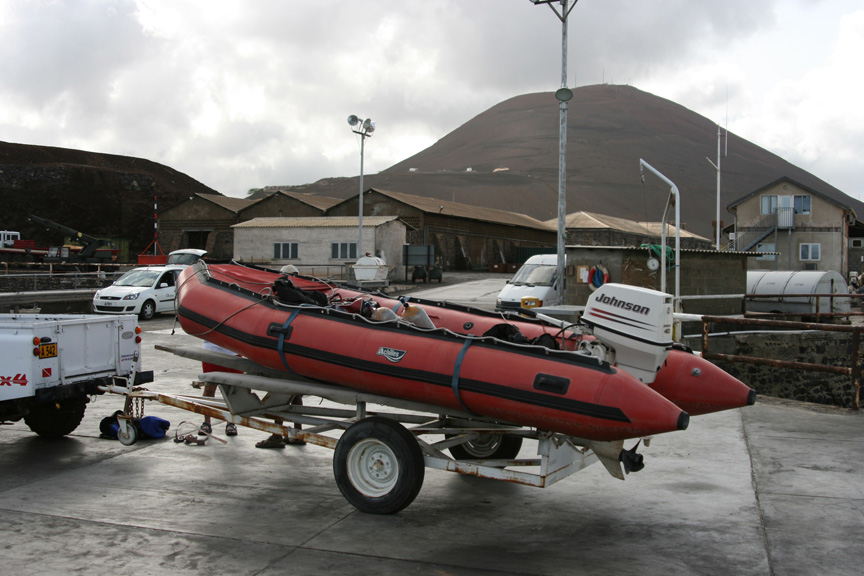
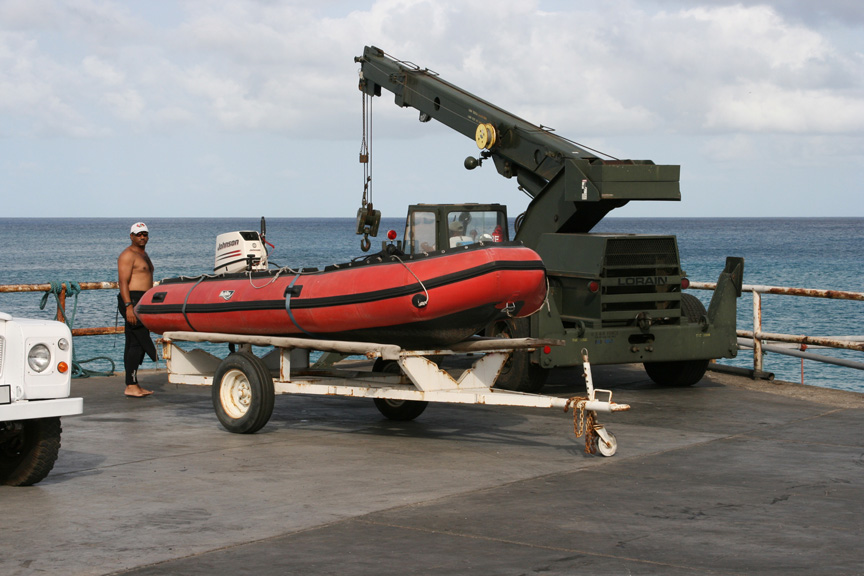

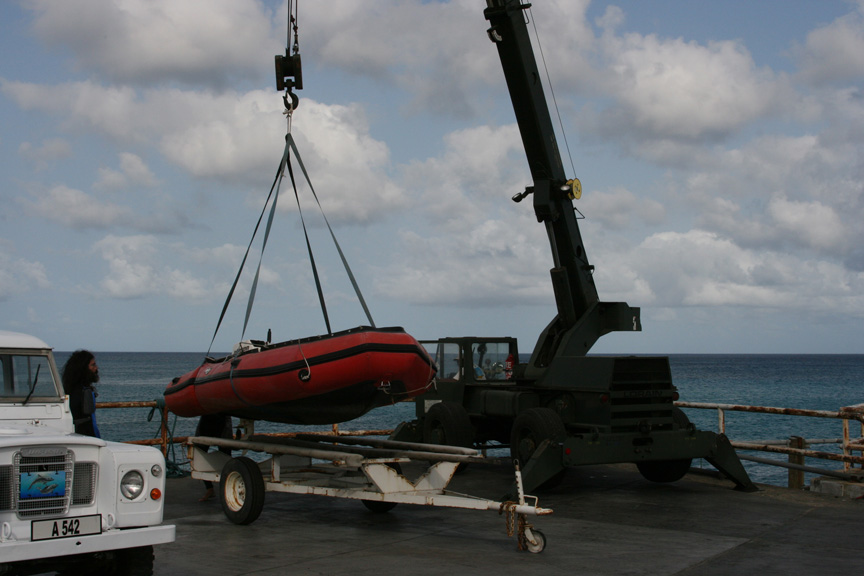
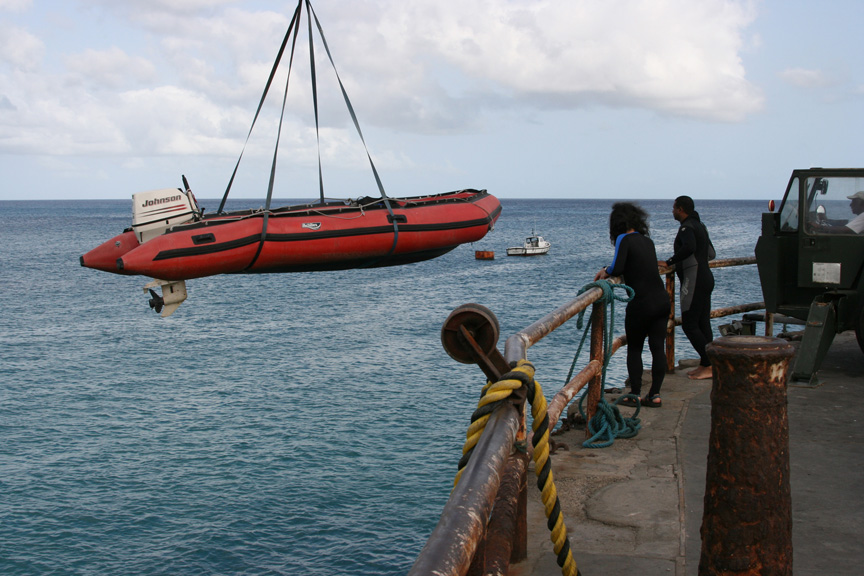



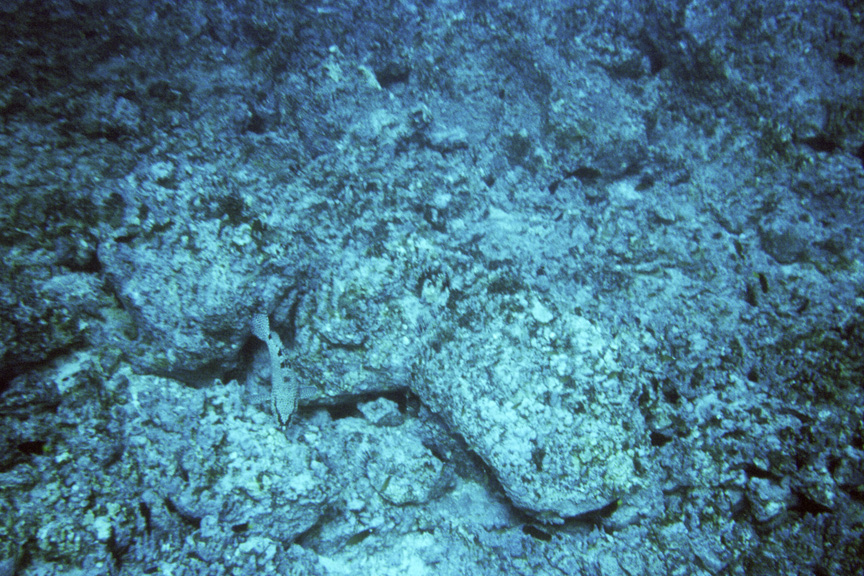
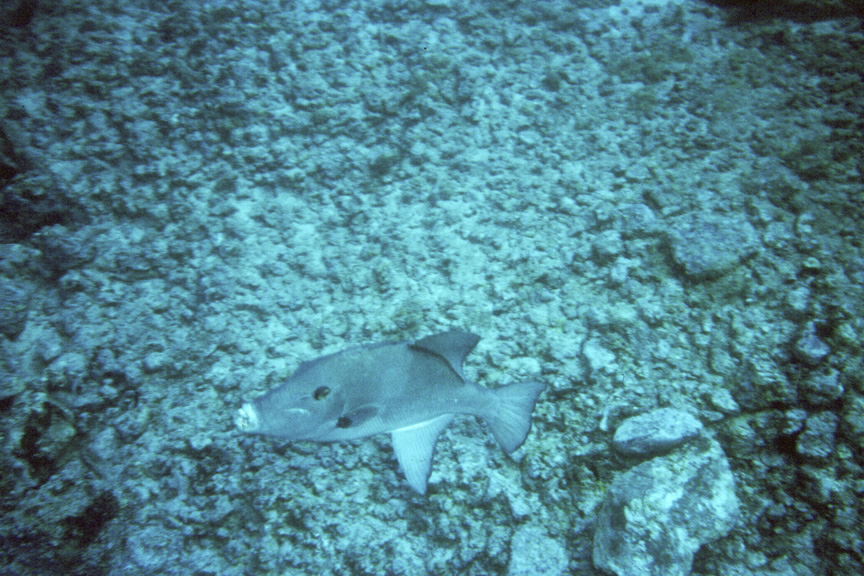
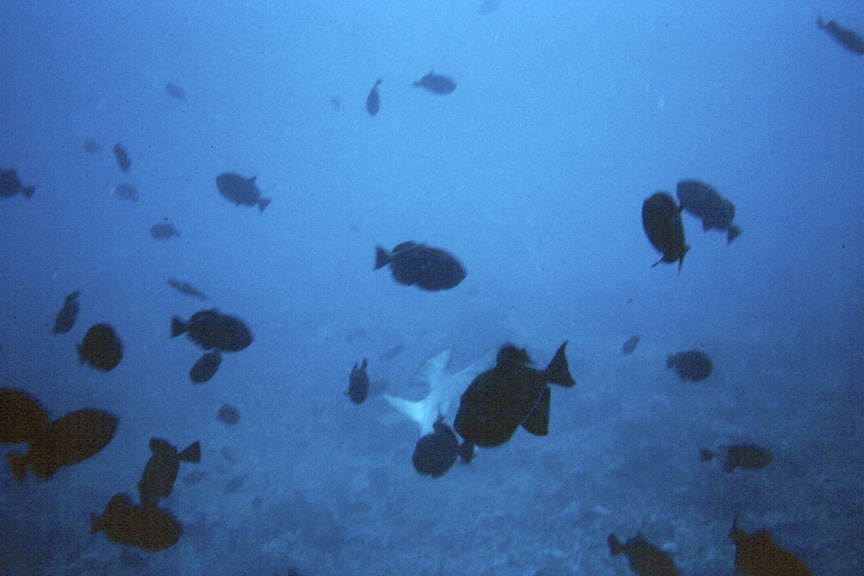





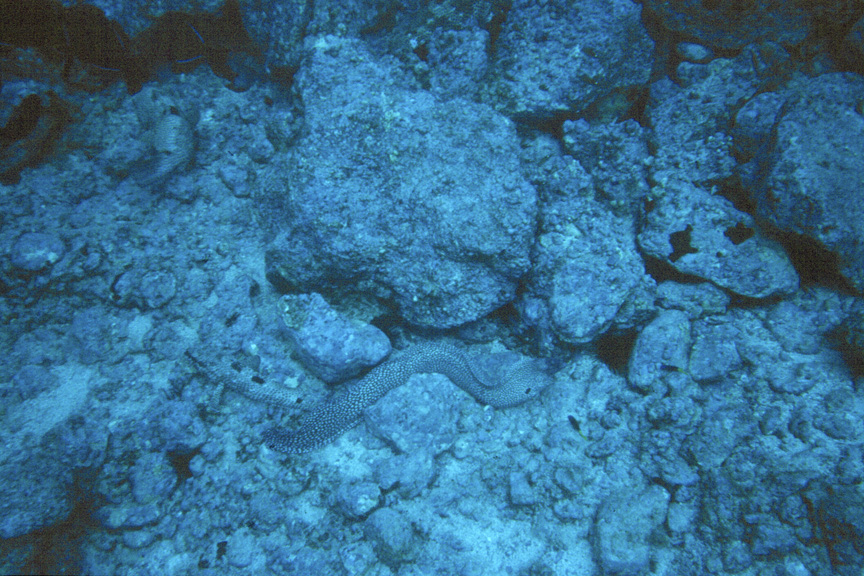
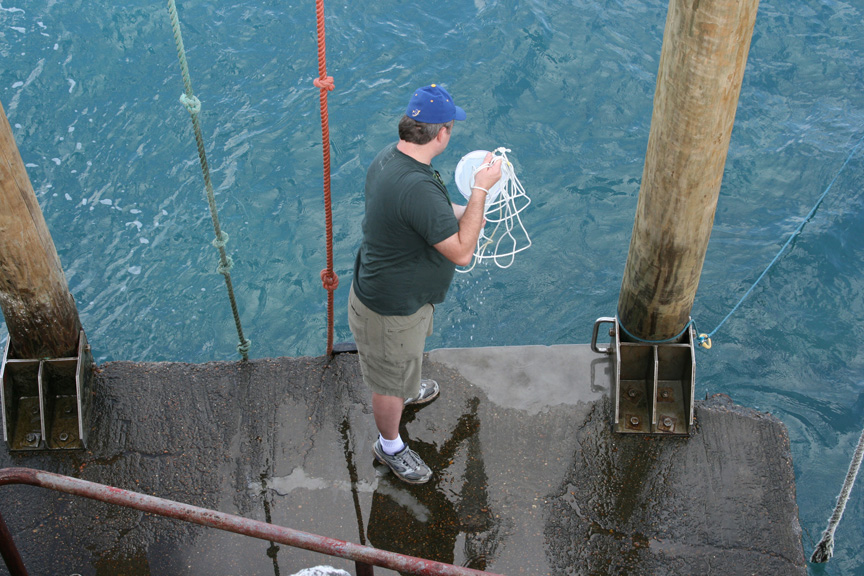
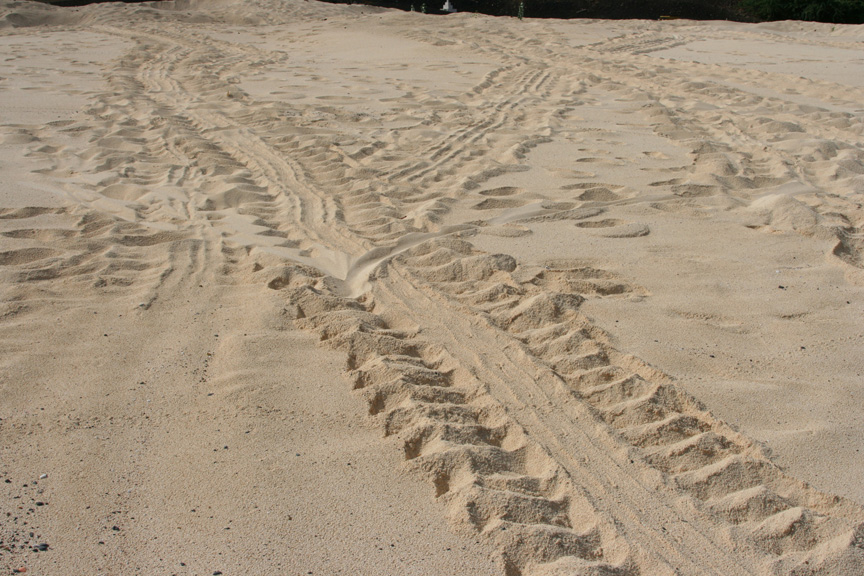



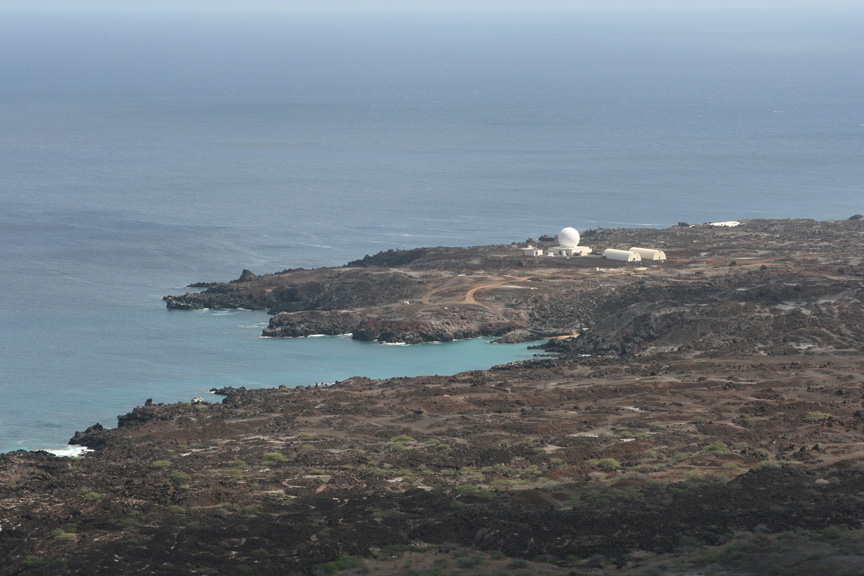
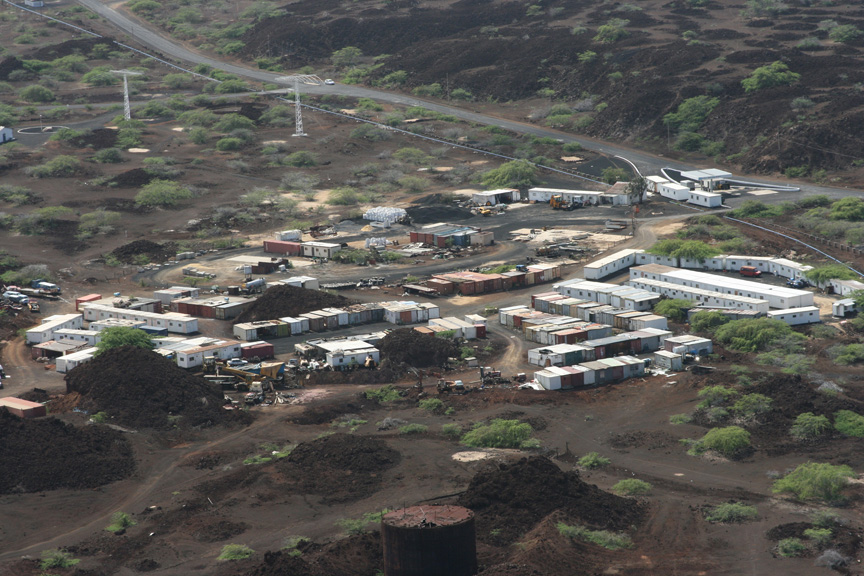


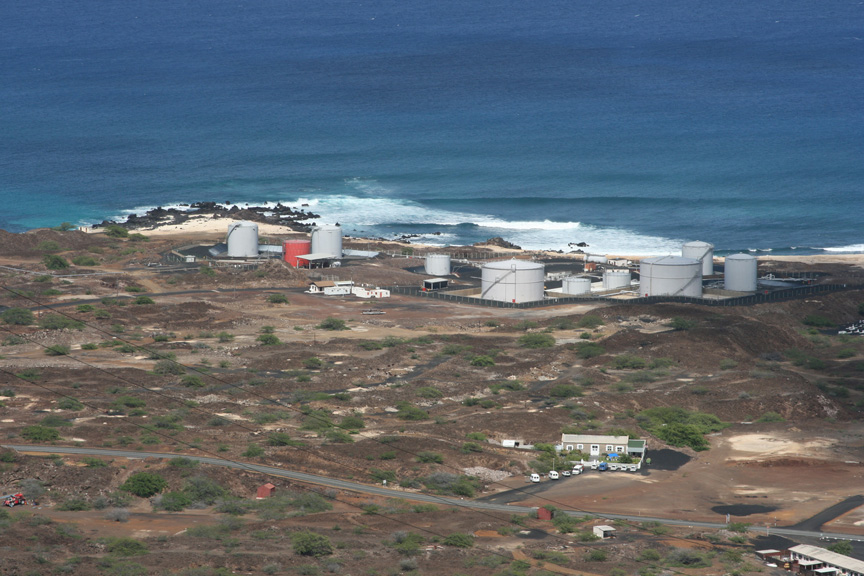

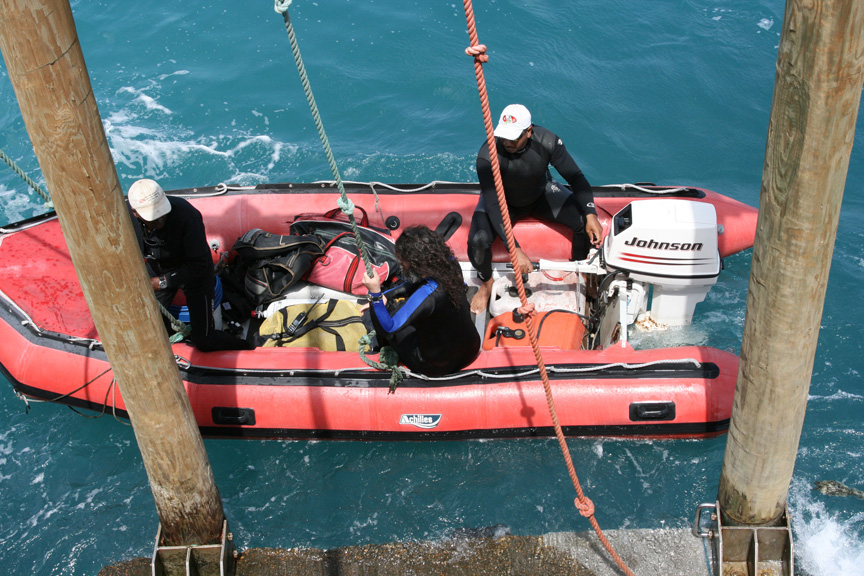
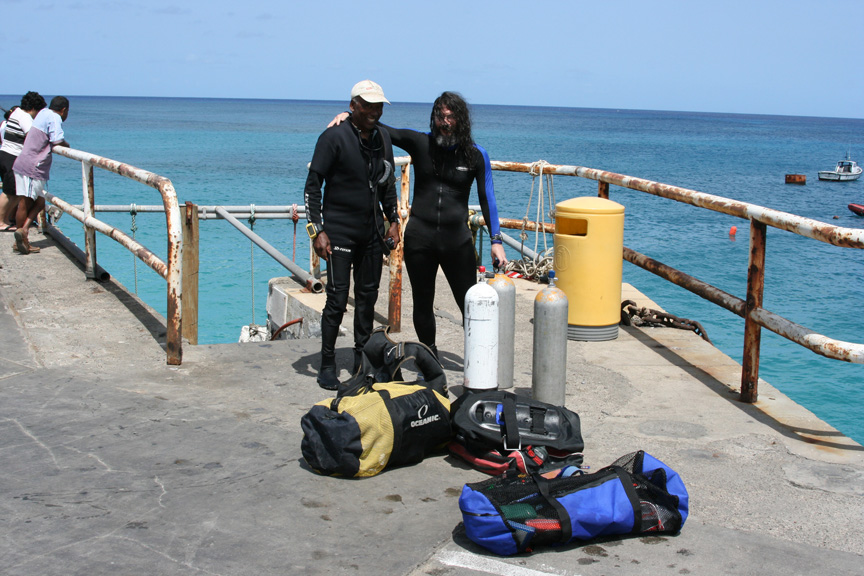


You must be logged in to post a comment.